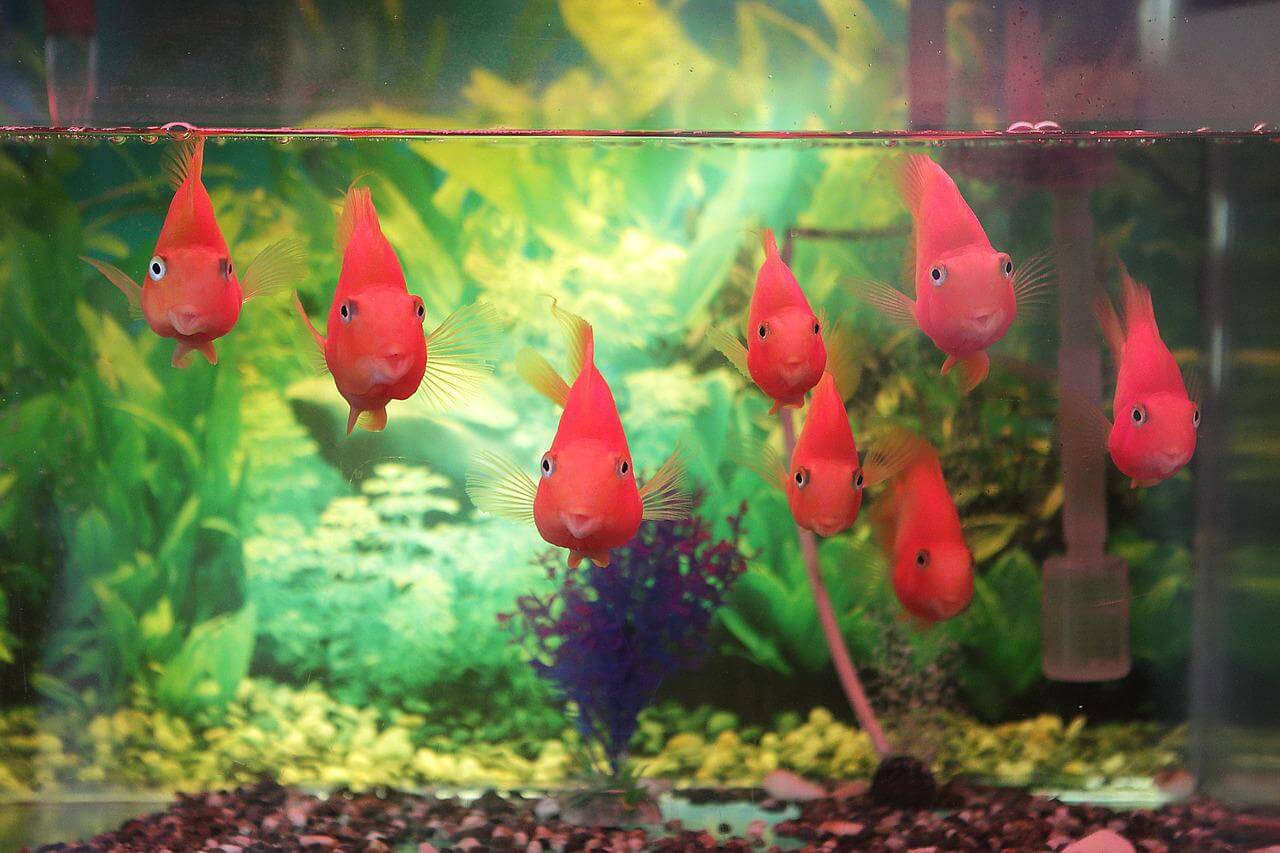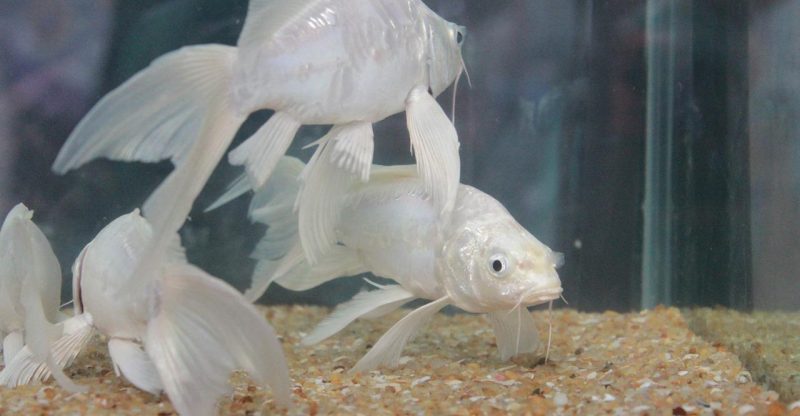How To Clean Substrate In Fish Tank?
Regularly cleaning substrate in the fish tank removes fish poop and bits of food that have fallen to the bottom of the tank. It’s crucial in maintaining the right water chemistry in your fish tank. Here’s a quick guide on how to clean substrate in a fish tank.
Do You Need To Clean Aquarium Substrate?

Yes, you need to clean the substrate in your fish tank. Even if you have a really good filter or do frequent water changes, there’s still a lot of waste that builds up on the substrate.
If you have white sand substrate, it’s easy to see just how much fish poop and waste collects on the sand.
If this waste builds up too much, it’ll overcome the ability of nitrifying bacteria to consume ammonia and this can kill your fish.
Regularly cleaning the substrate helps maintain ammonia and nitrite levels at zero. It also prevents an overgrowth of algae.
How Do You Clean Substrate In A Fish Tank?
Vacuuming is the best way to clean substrate in the fish tank. Use a hand syphon or a powered gravel/sand cleaner.
You’ll also need a bucket where the dirty water will flow into.
You don’t need to remove the fish or any ornaments when cleaning the substrate. As long as you are careful, they’ll be okay.
Note that cleaning fish tank substrate also includes a partial water change. That’s because you have to remove some of the water when vacuuming the gravel or sand. You can’t put the dirty water back into the tank.
So make sure you have pre-treated water at hand to top up the tank once you are done.
How To Vacuum Fish Tank Gravel ?
The challenge with cleaning fish tank gravel is that waste settles deep into the gravel. And if you don’t get to it, it’ll fester and mess up your aquarium’s chemistry.
Here’s how to effectively vacuum fish tank gravel.
- Set up your syphon pump until you have water flowing through it (watch the video below for an easy syphonic trick that doesn’t involve sucking one end of the tube). If your syphon pump is powered or has a hand pump/bladder, it’s easy to get the water flowing.
- Gently push the suction tube into the gravel, being careful to stay away from the fish to avoid sucking any of them up the tube.
- You’ll see a mixture of gravel and cloudy water go up the tube. Don’t let the gravel rise more than halfway up the tube. Lift the suction tube to let the gravel fall back down while the cloudy water flows out of the tank.
- To reduce how much water you take out of the fish tank, stop the waterflow as soon as you’ve picked some gravel. You can do this using a switch (for a powered syphon) or by pinching the flexible tube. Lift the suction cup and the gravel easily falls back down.
- Keep going until you’ve vacuumed all the gravel. If your fish are easily stressed out, consider vacuuming only a portion of the gravel each day.
- Once you are done, top up the tank.
Don’t forget to test the water every few days to make sure there’s no spike of anything dangerous.
Here’s a great video that provides a step-by-step guide for setting up a syphon pump and vacuuming gravel.
How To Vacuum Sand Substrate In A Fish Tank
Unlike with gravel, waste and fish poop doesn’t penetrate under sand. Instead, it collects over the surface.
This is good because you don’t need to push the suction tube into the sand. That would suck up the sand out of the tank, since it’s lighter than gravel.
Once you set up your syphon pump, pass the suction tube over the surface of the sand. You can lightly rake through the surface of the sand with the tube to help stir up the waste.
This will pick up the waste without sucking up the sand.
Don’t forget to vacuum any ornaments in the fish tank as well. You’ll be surprised how much waste has accumulated on them.
Tip: As you vacuum the sand, light sift through it with your fingers to break up any developing air pockets under the sand. A build up of these pockets can be lethal to fish when they eventually burst.
How To Vacuum Substrate In A Planted Fish Tank ?
Whether you vacuum a planted fish tank depends on how heavily planted it is.
If you have plants only in some areas, definitely vacuum the substrate on the non-planted areas.
When you get to areas near the plant, lightly vacuum the surface. You don’t want to go deep and suck up waste that the plant depends on for nutrition. It can also disturb plant roots.
If you have a heavily planted fish tank with little to no exposed substrate, there’s no need to vacuum. The plants will use up most of the waste and whatever’s remaining will be picked up by the filter.
The filter and regular water changes will be enough to keep the tank balanced. You should still run regular water tests to make sure the water chemistry is perfect.
Tip: If you have a sand substrate in your planted fish tank, you should still break up air pockets even if you don’t vacuum. Use your finger or some other tool to gently poke and sift the sand.
Can You Remove Gravel From a Fish Tank for Cleaning?
The only way to clean substrate in a fish tank, whether it’s sand, gravel or soil, is vacuuming. Never remove substrate from the tank, rinse it, and then put it back into the tank.
This can cause several problems, the biggest being a disruption in the nitrogen cycle. You’ll destroy a lot of good bacteria residing in the substrate and this could throw off your fish tank’s water balance.
It’ll take a month or more to cycle your tank back to stability.
Secondly, it is stressful for the fish. Third, it is a lot more tedious and time consuming compared to just vacuuming.





